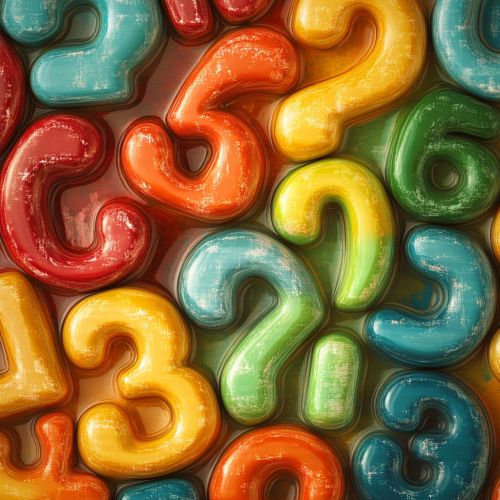Decimal Number System: Difference between revisions
(Created page with "== Introduction == The decimal number system, also known as the base-10 numeral system, is the most widely used numerical system in the world today. It is the standard system for denoting integer and non-integer numbers. The system is based on ten different digits: 0, 1, 2, 3, 4, 5, 6, 7, 8, and 9. Each digit's position within a number determines its value, which is a fundamental aspect of the positional notation system. This article delves into...") |
No edit summary |
||
| Line 11: | Line 11: | ||
The decimal system is a [[Base (Mathematics)|base-10]] system, meaning it uses ten symbols (0-9) to represent all numbers. The value of each digit depends on its position, or place value, within the number. The rightmost digit has a place value of 10^0 (ones), the next has a place value of 10^1 (tens), followed by 10^2 (hundreds), and so on. This positional notation allows for the efficient representation and manipulation of large numbers. | The decimal system is a [[Base (Mathematics)|base-10]] system, meaning it uses ten symbols (0-9) to represent all numbers. The value of each digit depends on its position, or place value, within the number. The rightmost digit has a place value of 10^0 (ones), the next has a place value of 10^1 (tens), followed by 10^2 (hundreds), and so on. This positional notation allows for the efficient representation and manipulation of large numbers. | ||
[[Image:Detail-98585.jpg|thumb|center|An image of a sequence of numbers in the decimal system, arranged in a visually appealing manner.|class=only_on_mobile]] | |||
[[Image:Detail-98586.jpg|thumb|center|An image of a sequence of numbers in the decimal system, arranged in a visually appealing manner.|class=only_on_desktop]] | |||
== Mathematical Properties == | == Mathematical Properties == | ||
Latest revision as of 08:43, 19 October 2024
Introduction
The decimal number system, also known as the base-10 numeral system, is the most widely used numerical system in the world today. It is the standard system for denoting integer and non-integer numbers. The system is based on ten different digits: 0, 1, 2, 3, 4, 5, 6, 7, 8, and 9. Each digit's position within a number determines its value, which is a fundamental aspect of the positional notation system. This article delves into the origins, structure, mathematical properties, and applications of the decimal number system.
Historical Background
The decimal system's origins can be traced back to ancient civilizations. The earliest known use of a decimal system was by the ancient Egyptians around 3100 BC. They employed a decimal system for counting and measurement, although it was not a positional system. The Hindu-Arabic numeral system, developed by Indian mathematicians around the 6th century AD, introduced the concept of zero and positional notation, which laid the groundwork for the modern decimal system. This system was later transmitted to the Islamic world and then to Europe, where it gradually replaced Roman numerals.
Structure of the Decimal System
The decimal system is a base-10 system, meaning it uses ten symbols (0-9) to represent all numbers. The value of each digit depends on its position, or place value, within the number. The rightmost digit has a place value of 10^0 (ones), the next has a place value of 10^1 (tens), followed by 10^2 (hundreds), and so on. This positional notation allows for the efficient representation and manipulation of large numbers.


Mathematical Properties
Positional Notation
In the decimal system, each digit's value is determined by its position. This is known as positional notation. For example, in the number 345, the digit 5 is in the ones place, 4 is in the tens place, and 3 is in the hundreds place. The number can be expressed as 3×10^2 + 4×10^1 + 5×10^0.
Arithmetic Operations
The decimal system supports the four basic arithmetic operations: addition, subtraction, multiplication, and division. These operations are performed using algorithms that take advantage of the system's positional nature. For example, addition involves aligning numbers by their rightmost digits and adding corresponding digits, carrying over any excess to the next left position.
Decimal Fractions
Decimal fractions are a way of expressing fractions in the decimal system. They are represented by a decimal point, which separates the integer part from the fractional part. For example, the fraction 1/2 can be expressed as 0.5 in decimal form. Decimal fractions are widely used in everyday calculations and scientific measurements due to their ease of use and precision.
Applications of the Decimal System
The decimal system is ubiquitous in modern society. It is the standard for most measurement systems, including the metric system, which is based on powers of ten. The system is also used in financial transactions, where decimal fractions are used to represent currency values. In computing, although binary is the primary system, decimal is often used for input and output operations due to its familiarity to humans.
Decimal System in Computing
While computers primarily use the binary number system, the decimal system is still relevant in computing. Decimal arithmetic is used in applications requiring high precision, such as financial calculations. Floating-point arithmetic, which represents real numbers approximately, often uses a base-10 representation for input and output.
Decimal System in Scientific Notation
Scientific notation is a method of expressing very large or very small numbers in a compact form. It is based on the decimal system and involves expressing numbers as a product of a coefficient and a power of ten. For example, the number 6,500,000 can be written as 6.5 × 10^6. This notation is widely used in physics, chemistry, and astronomy to simplify calculations and improve readability.
Decimal System and Cultural Influence
The decimal system has had a profound impact on various cultures. Its adoption facilitated the development of mathematics and science, enabling advances in technology and industry. The system's simplicity and efficiency have made it the preferred choice for education and commerce worldwide.
